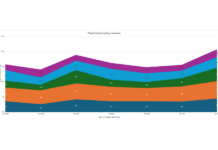JP Morgan has seen a significant drop in Q3 trading revenues, with fixed income falling to US$3.67 billion, a drop of 10% against the previous quarter and 20% against Q3 revenues in 2020. Equities fell to US$2.6 billion, down 3% against the previous quarter, but representing an increase of 30% against Q3 2021.

“In the Corporate & Investment Bank, Global IB fees were up 52% driven by a surge in M&A activity and our strong performance in IPOs,” said CEO Jamie Dimon. “Markets revenue was very strong overall and down just 5% compared to a third quarter record last year, as continued normalisation in fixed income offset a strong performance in equities. Commercial Banking earned a record US$1.3 billion of gross investment banking (IB) revenue reflecting the strength of the M&A market. CB loans were down 7%, however, we are seeing early signs of Commercial Real Estate loan growth on modestly higher new loan originations in Commercial Term Lending. In Asset & Wealth Management, AUM of US$3 trillion grew 17% driven by higher asset values and strong net inflows, and loans continue to be strong, up 20% primarily driven by securities-based lending.”
Markets & Securities Services revenue was Us$7.5 billion, down 4% and of that markets revenue was US$6.3 billion, down 5%.
The drop in fixed income markets was attributed by the bank predominantly to lower revenue in commodities, rates and spread products as compared with a favourable performance in the prior year.
The current quarter also included an adjustment to liquidity assumptions in the derivatives portfolio, with the bank’s liquidity coverage ratio (LCR), the proportion of high-quality liquid assets (HQLAs) held to fund cash outflows for 30 days, increasing to 174%, up from 172% in Q2 2021 and up from 154% in Q3 2020.
Speaking with analysts on the earnings call, Dimon noted, “One of the fat tail-risks that banks should be worried about is high inflation, high rates, and having liquidity protects us against those things.”
The firm’s securities services revenue was US$1.1 billion, up 9%, largely driven by fee growth. Noninterest expense was US$5.9 billion, relatively flat to the prior year, as higher structural expense, volume- and revenue-related expense and investments, including technology and front office hires, were offset by lower legal expense.
The bank reported the provision for credit losses was a net benefit of US$638 million, driven by a net reserve release.
©Markets Media Europe 2025


























